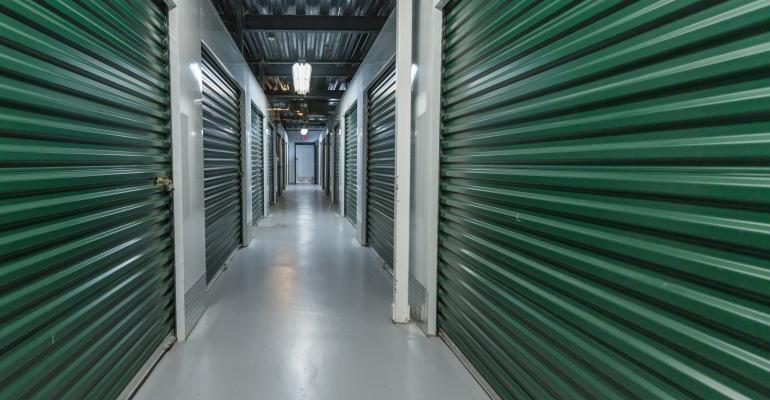Self-storage REITs are ready to swoop in on an enticing source of acquisitions.
As the self-storage industry continues to contend with a glut of supply in many major markets, some developers are nervous. Why? Because they’re wrestling with slower than anticipated lease-ups at new self-storage facilities.
“The pro formas for these developers aren’t necessarily meeting expectations. That’s a nationwide phenomenon now,” says Marc Boorstein, principal with Chicago-based MJ Partners, a commercial real estate firm whose specialties include self-storage.
For at least some of the five major publicly-traded self-storage REITs, this translates into possible opportunities to buy newly-constructed properties at bargain prices at a time when the REITs have been curtailing their in-house development activity.
During the Aug. 2 second-quarter earnings call for Greenwood Village, Colo.-based National Storage Affiliates Trust, Chairman and CEO Arlen Nordhagen said the REIT is keeping tabs on potential acquisitions in the midst of “a lot of developer panic” about lease-up momentum.
However, he added, prices for those facilities remain too high for the REIT to make any moves. Once those prices fall, National Storage Affiliates will be “very interested” in submitting offers for them, Nordhagen said.
Glendale, Calif.-based Public Storage is in a similar position. During the REIT’s second-quarter earnings call on July 31, President and CEO Joe Russell said some owners of properties in lease-up mode “are far more agreeable and more anxious” now about exiting their self-storage investments.
Malvern, Pa.-based CubeSmart also appears to be prepared to capitalize on the weakness of worried developers. During the REIT’s second-quarter earnings call on July 26, President and CEO Chris Marr said CubeSmart could profit from buying facilities whose owners are grappling with lending issues.
“As we look out, it’s going to be more and more difficult for the local entrepreneur to make projects make sense,” Marr said. “And I think it’s going to be more and more difficult for the smaller operator to compete in those markets that have seen the pressures of new supply.”
Those new supply pressures, which aren’t expected to abate until late 2019 or sometime in 2020, are making it harder for some developers of ground-up projects to meet financial projections. These pressures remain especially acute in major markets including Portland, Ore.; Nashville, Tenn.; Seattle; and Orlando, Fla., according to an August report from data provider Yardi Matrix.
The Yardi Matrix report shows that 2,118 self-storage properties are in various stages of development around the country—including 647 under construction, 1,106 planned and 365 prospective projects. The national new supply pipeline as a share of existing inventory inched up by 0.1 percent in August. In all, this pipeline accounts for 9.5 percent of total inventory, the report says.
“Ground-up developments are always attractive when the market conditions are encouraging. The returns on good projects are very nice. But risks are higher now than they have been in years,” self-storage industry consultant Tron Jordheim says. “New developments depend on market conditions staying the same or improving between the start of the project and the end of the third year of lease-up.”
In some cases, new developments could run into the headwinds of an impending recession. Although experts say stabilized self-storage facilities should be able to withstand at least a mild recession, new facilities in the lease-up phase could struggle mightily under the weight of an economic downturn.
The majority of new self-storage facilities currently in the lease-up period are failing to deliver the hoped-for performance, according to Boorstein. “These developers are very concerned about what’s going on—every one of them,” he says.
As a result, REITs are “sitting there waiting” to pick off some of these assets, ne notes, particularly those owned by developers who are spooked by a recession, or even a short-lived economic slump.
Indeed, most recent acquisitions by the publicly-traded self-storage REITs have been facilities in lease-up phase, especially in oversupplied markets, says Ryan Lumb, a self-storage analyst at Green Street Advisors Inc., a research and advisory firm based in Newport Beach, Calif. He notes that these facilities won’t directly affect the REITs’ same-property results for at least a couple of years.
A report from commercial real estate services company Newmark Knight Frank (NKF) found that the five major REITs bought 61 wholly-owned properties in the second quarter of 2019, excluding joint venture deals and mergers, for a total price of $589.9 million. This suggests the REITs’ deal volume for 2019 will surpass the $1.3 billion level of 2018, the report notes.
“If you take a longer-term perspective, the acquisition opportunities that have been coming to market from … busted deals do represent a long-term value once we make it out of the current supply cycle,” says Lumb.
Despite that value proposition, Boorstein doesn’t foresee a massive wave of troubled self-storage properties flooding the market. “It’s not like the residential mortgage crisis,” he notes.





